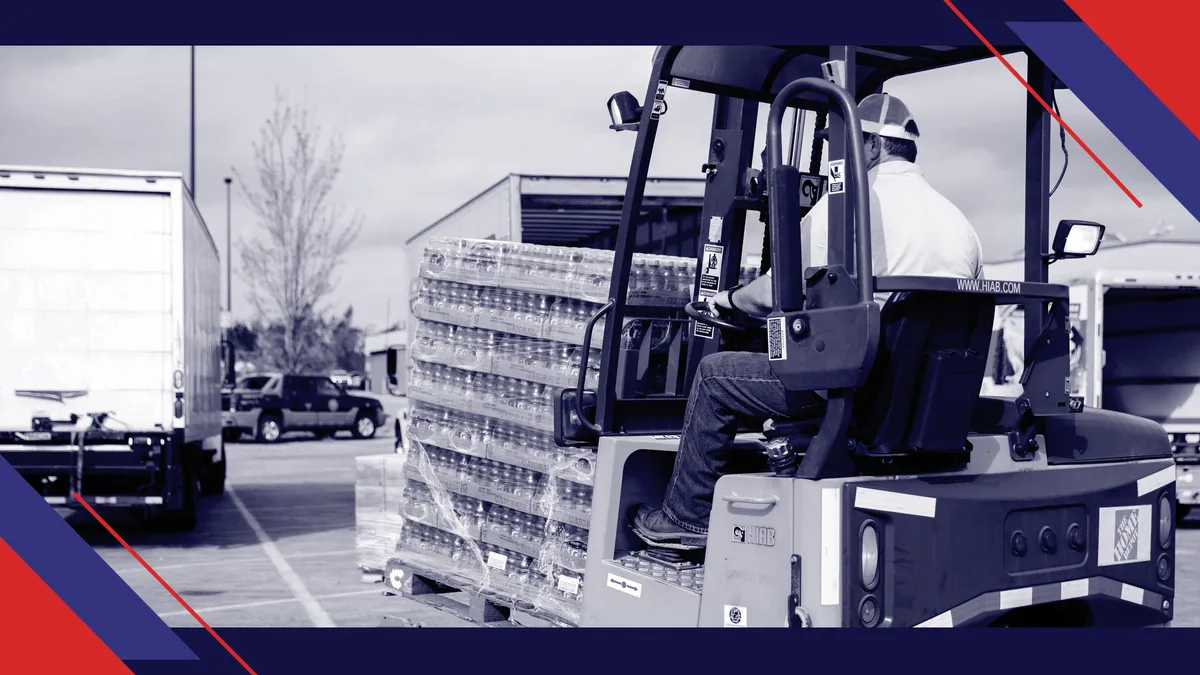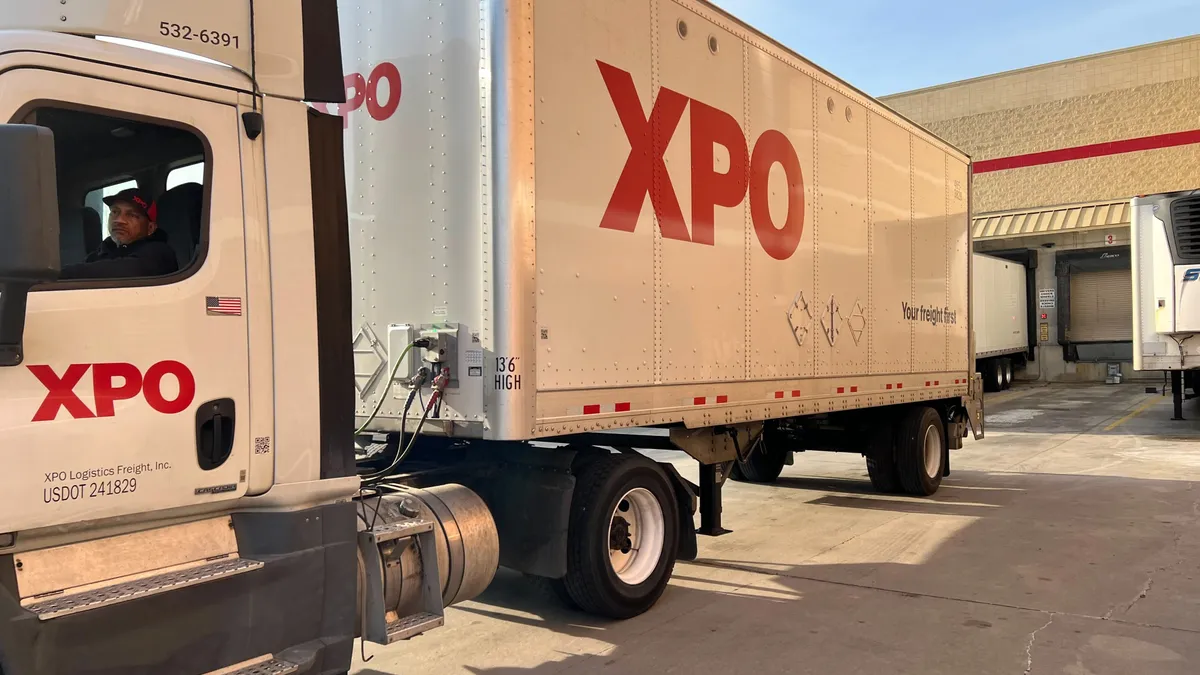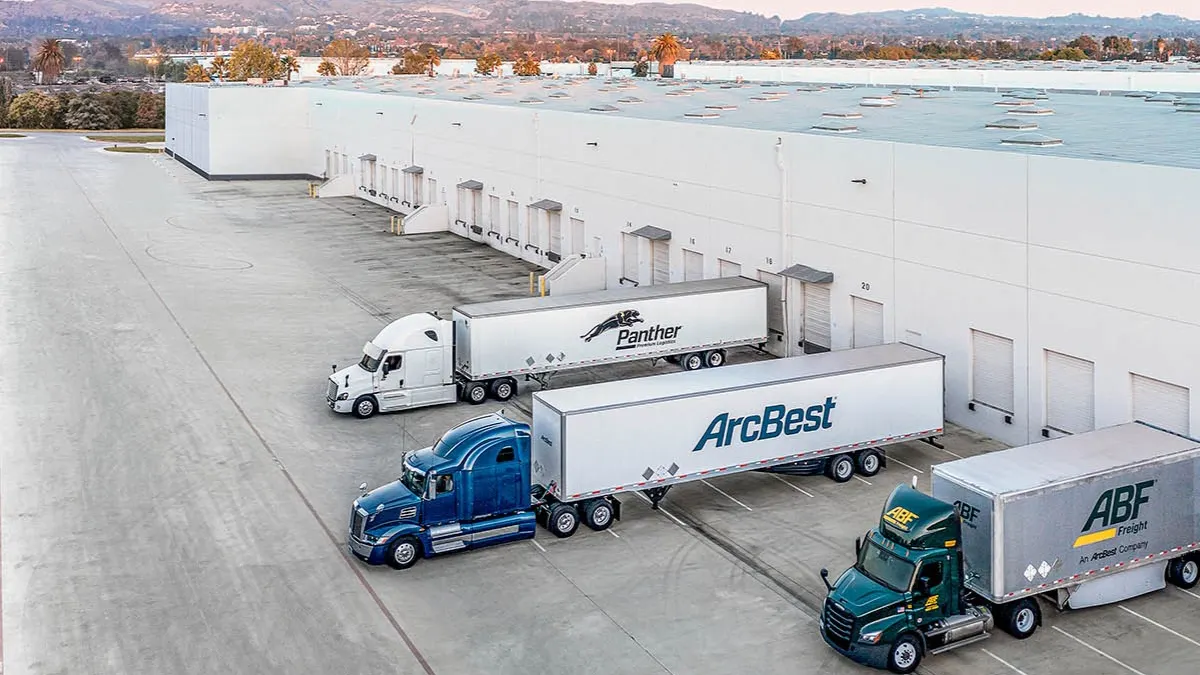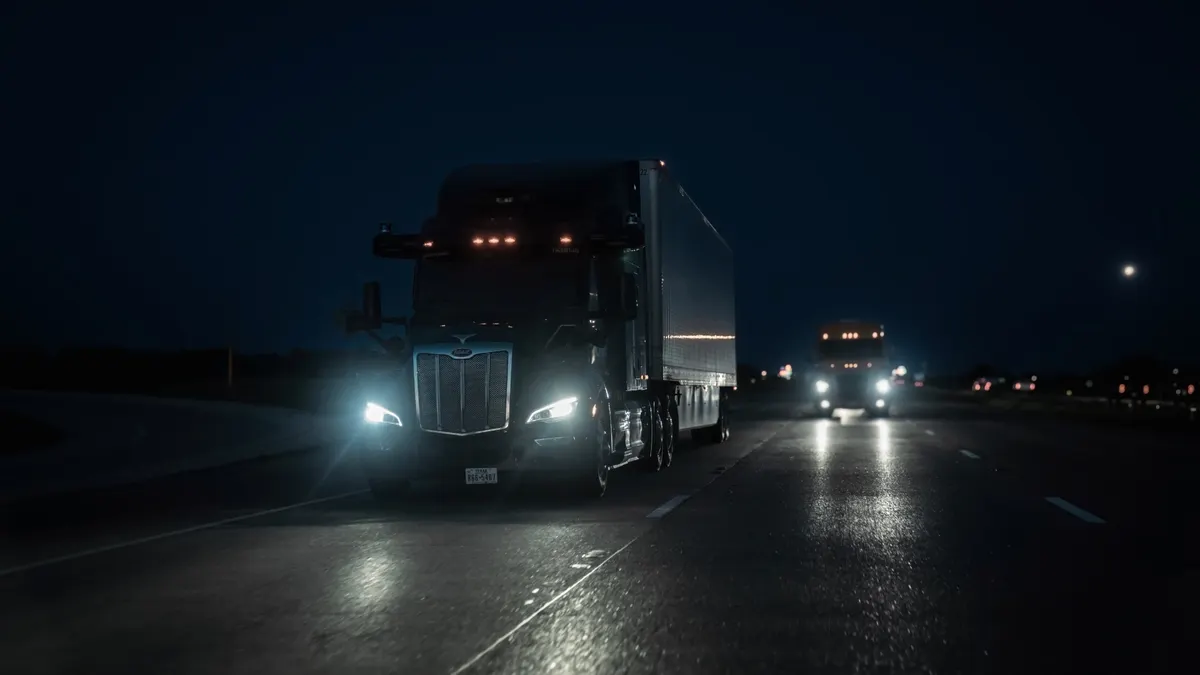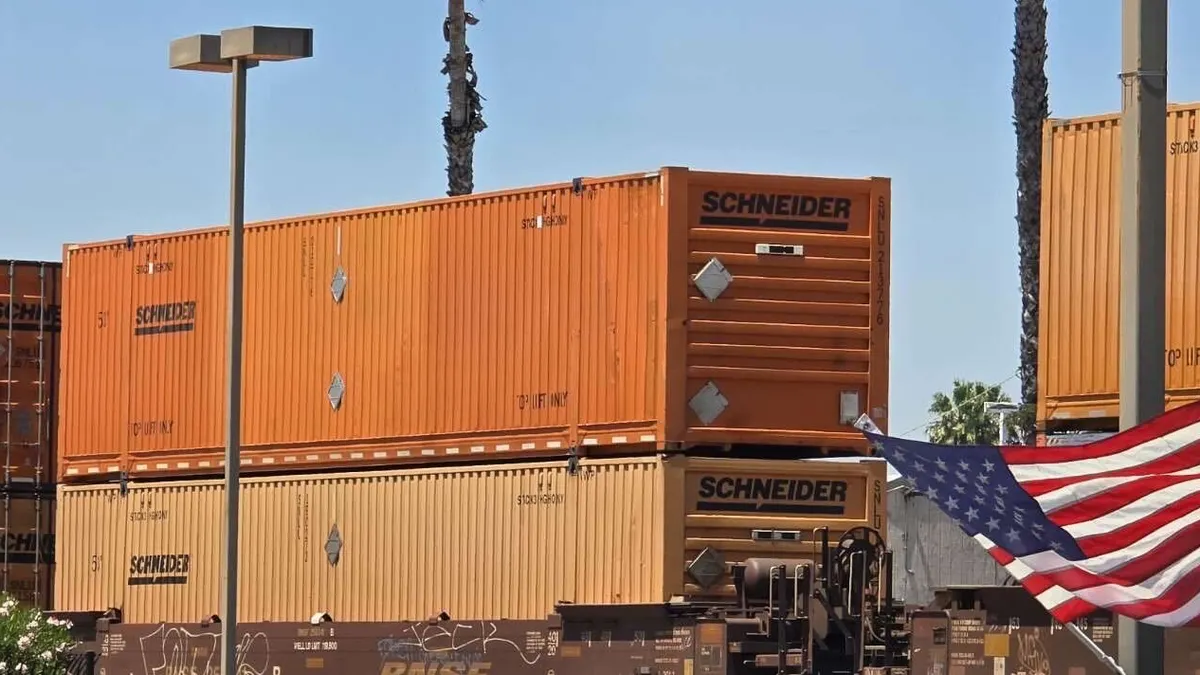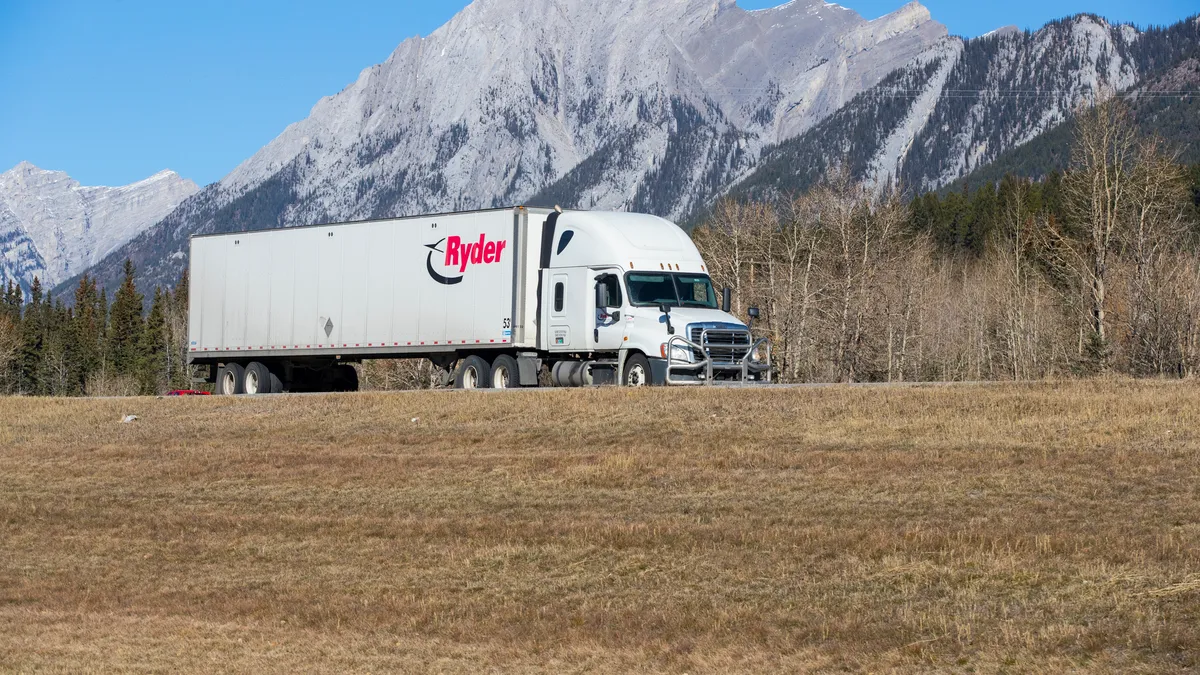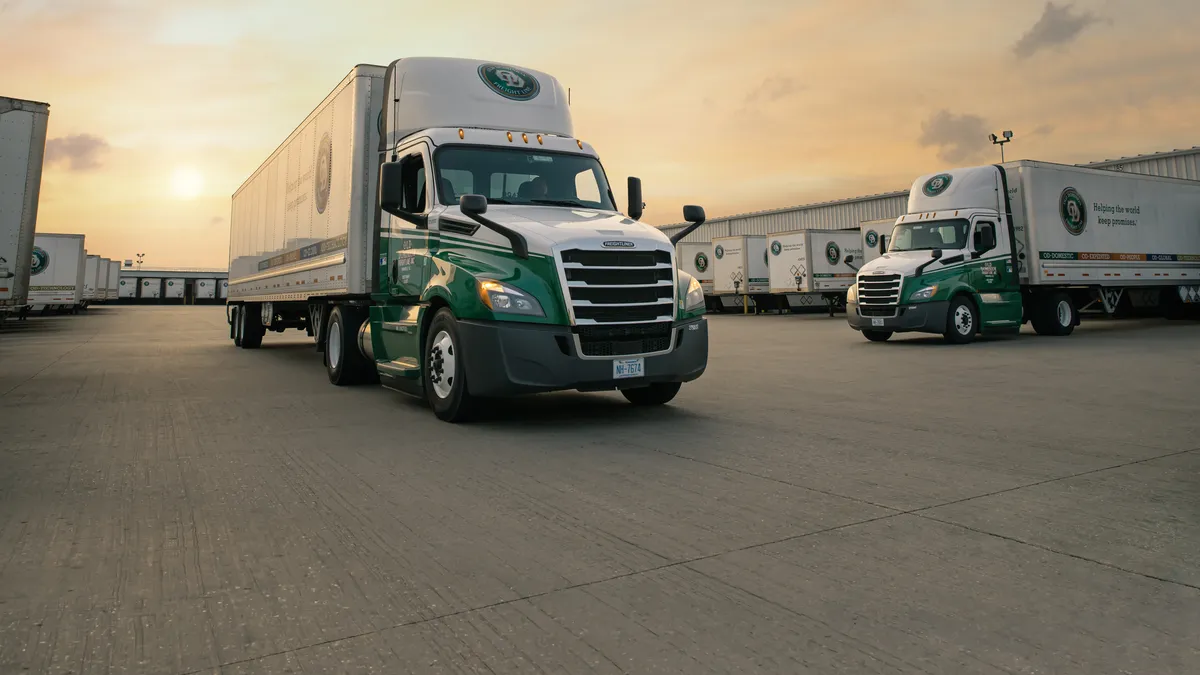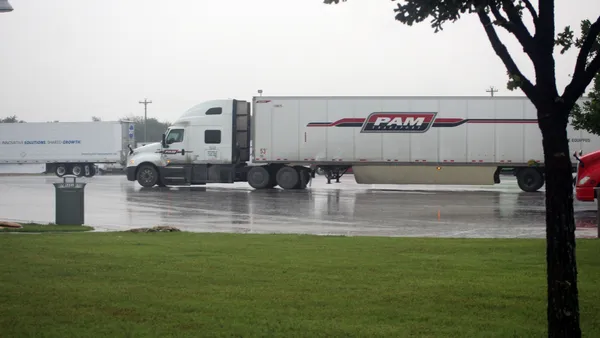This is a contributed op-ed written by Kathy Fulton, executive director of the American Logistics Aid Network. Opinions are the author's own.
If the events of the past year have taught us anything, it's that today's supply chains are amazingly resilient.
Despite dealing with a record number of challenging global disasters and disruptions, industry professionals responded with adaptability and versatility, finding ways to keep food, medical supplies and other critical goods flowing even when times were at their toughest.
But even resilience has its limits, which is why the issue of climate change and its impact on disasters is such a timely one.
The relevance of climate change
It's a subject that has garnered more national attention in recent months thanks to the Biden administration officially rejoining the U.S. to The Paris Agreement. And it's been one that is clearly on many businesses' minds. In the World Economic Forum's 2021 Global Risks Report, for example, respondents ranked "climate action failure" second to only infectious diseases in terms of their perceived threat to society.
We at the American Logistics Aid Network have seen the effects firsthand.
From 2008 to 2015, we mobilized support for an average of three extreme weather events per year. But that average has nearly tripled since 2016. We now handle an average of 8 extreme weather events per year, with more intense tornados, hurricanes, floods and fires now seen as the norm.
We were especially busy during 2020 thanks to a record-setting hurricane season with 30 named storms. By year's end, there were 22 billion-dollar disasters — also a new record. The previous record-holders were 2011 and 2016, which had 17 named storms.
What to do
So, what should be our response to these very real events, and the threats that future ones pose? Here are my thoughts.
Put on your own oxygen mask first
My first suggestion may sound a little bizarre coming from someone who's engaged in humanitarian activities, because it sounds a mite selfish. But one of the most practical ways you can help offset the effects of the many disasters that are being caused (or intensified) by climate change is to protect your own employees and business.
There are numerous resources for guidance, including websites like Federal Emergency Management Agency's ready.gov. In addition, there are promising technologies that can help you map out supplier and customer networks from a disaster management perspective, so you'll have a better idea of where to channel your disaster resilience efforts. You can also turn to ALAN's Supply Chain Intelligence Center when a weather disaster is threatening. There you'll find all the latest on weather conditions in your area.
If you're a supply chain professional who truly wants to help survivors of climate-related disasters, consider donating your logistics resources.

Just as important, prepare and protect your personnel. Do this by ensuring that they know where local shelters and food banks are located, giving them ample time to evacuate if a disaster is approaching, and making sure your company has the resources necessary to support anyone who might wind up being directly affected by a hurricane, wildfire or earthquake.
This "put on your own oxygen mask first" tip is a hugely important one. After all, no matter how altruistic your company is, you can't really be a help to the people who are survivors of climate-related disasters if you're the one who winds up needing help.
Stick to your game
Please don't self-deploy or sponsor a product collection drive.
After major disasters like hurricanes occur, many instinctively want to collect supplies and send trucks directly to the impacted areas. But most of these shipments don't provide the kind of immediate help that communities need in a crisis. In fact, they often get in the way of the many well-coordinated relief activities that are already taking place. And many of the donated items wind up in landfills.
If you're a supply chain professional who truly wants to help survivors of climate-related disasters, consider donating your logistics resources instead.
Studies suggest that 60% to 80% of the spending for humanitarian response is related to supply chain activities. So every free logistics service, square foot or piece of equipment you're willing to provide is truly worth its weight in gold.
And that's not just true right after a disaster occurs. The logistics needs of nonprofit organizations that support community restoration typically continue for months and years after storm waters recede or fires are extinguished. These later needs are often ones that non-profits like ours have the hardest time filling.
Address the root cause
The first two tips — while important — merely address some of the symptoms of climate change. But in order to make an even more meaningful difference, we're all going to have to focus on climate change's root causes. And thankfully those of us who work in the supply chain have the guidance of some of the finest minds in the country to help.
In February 2020, the Massachusetts Institute of Technology's Sloan School published a piece called "Supply chain resilience in the era of climate change" that included several key sustainability activities that all organizations should engage in. Here are three of my favorites: reduce emissions by adjusting manufacturing or supply chain footprints, support government policy adjustment, and collaborate across all levels of the supply chain — and beyond.
Reduce, support, collaborate
Many of today's supply chain network optimizations are focused on reducing costs or decreasing shipping times rather than decreasing carbon footprints. But I'm hopeful we — humanitarian organizations as well as for-profit businesses — can eventually do all three.
At the 2016 World Humanitarian Summit, United Nations Secretary-General Ban Ki-moon called on humanitarian organizations to be "as local as possible, as international as necessary." ALAN has begun re-examining some of the cases and activities we're willing to support in light of this advice, and hopefully many other relief organizations will join us in our quest.
The U.S. government is currently undertaking an extensive study of supply chains in order to ensure their resilience to a variety of disruptions, including climate change. Guidance is pending on how businesses can become involved in these efforts. But if your company is provided an opportunity to participate, please speak up and share your concerns and ideas. After all, no one has a better grasp of our industry's environmental challenges and opportunities than the people who actually work in it.
While individual corporate sustainability efforts are great, there is far more to be gained by aligning all of our efforts.

When ALAN was created, it wasn't because non-profits didn't already have logistics operations — or that the supply chain industry wasn't helping with relief efforts. Instead, it was because our founders realized that the sum of all of these efforts had the potential to be far more effective, and that there was much to be gained by creating opportunities for the public, government and non-profit sectors to work in sync.
And over the past 15 years, we've watched many disaster relief efforts get considerably better and more efficient simply because of this collaborative approach.
Making a dent in the problem of climate change will require similar levels of cooperation, collaboration and commitment. While individual corporate sustainability efforts are great, there is far more to be gained by aligning all of our efforts, sharing everything from our ideas and most successful practices to our latest innovations.
We must be willing to embrace alternative energy sources even if it occasionally means sacrificing some shipping economy or speed. And we must advocate for greener solutions and participate in mitigation efforts even when sustainability isn't the cause du jour.
Will such teamwork be easy? Probably not. But in the long run, it could be a game-changer.
This article is part of a series on the impacts climate change and severe weather have on logistics networks. View the entire series here.


